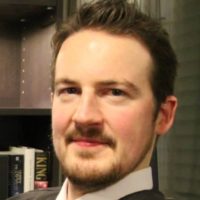Steven Vercruysse
Email: steven.vercruysse@ntnu.no

SciCura webpage: http://SciCura.org/vsm
NTNU webpage: http://www.ntnu.edu/employees/steven.vercruysse
Personal webpage: http://stcruy.com
- Curation technology development
Hi! I’m Steven Vercruysse. (English pronunciation: Ver-cruise).
Academically, I got a PhD in Computational Biotechnology, a MSc in Computer Science, and a MSc in Physics.
Professionally, I am a computer scientist who works among cancer researchers. Let me explain this project in a fun way, to show where I contribute:
The Biology part:
The problem with cancer is that it’s an extremely complex disease (or in fact a group of diseases). When a patient has cancer, it means that many things have gone wrong in their bodies, simultaneously. It’s a combination of errors that makes cells divide uncontrolledly and spread like a tumorous wildfire.
In the old days, our main weapon against this were drugs that simply kill off any cell that grows too fast (‘chemotherapy’). But that takes down a lot of the good guys too, and still doesn’t catch all the bad ones. Therefore, a new class of drugs is being designed. Each of these new drugs can zoom in on one particular ‘thing’ that could go wrong in a cell, and fixes only that thing (‘targeted therapy’ or ‘personalised medicine’). – It’s like, if you break your little finger, your doctor can put a plaster cast on that one finger only, instead of drenching your entire body in cement.
But as we said, cancer means that a combination of many things went wrong at the same time. And this combination is different for each patient. So for long-term survival, each patient needs a _custom-fit combination_ of these new, targeted drugs.
The Computational Biology part:
So how can we decide _which drug combination_ each particular patient needs?We can only answer that by first building a detailed picture (a ‘model’) of how cells work on a molecular level, and then by checking all the different things that could go wrong with it. – It’s like, in order to fix a cuckoo clock, you first need to learn about all the little wheels and levers, and how they used to work in harmony when the clock came from the shop. Only then you can figure out what parts are now broken, and what combination of fixes you should apply.
Only, biology is magnitudes more complex than a cuckoo clock.
Luckily, people have studied molecular biology for decades now, so there’s a lot of knowledge out there about how cells tick. – Unluckily though, there is so much information out there, that none of us people can fit it all inside our limited human minds.
The Computer Science part:
So at the scale of cancer complexity, we need to combine the existing knowledge into a computer. Now the problem is that _most_ of this knowledge is buried in scientific literature, just as written reports, as plain text. And only human beings can correctly understand these reports.
So how do we make this knowledge ‘computable’? Well, you’d say, let’s put it in a database! However, if you’d have a look at scientific literature, you’d soon realize that there is no current database or technology that allows you to capture the _diversity_ of interesting information that’s out there. Especially not in a way that’s user-friendly enough for people specialized in biology to happily work with.
So that’s where I come in:
I developed on a new technology: an intuitive tool that enables people to translate any real-world knowledge into a computable form. In other words: it’s an easy, flexible method to (manually) translate any knowledge from scientific literature, into a form that computers can ‘understand’.
This tool is called VSM (Visual Syntax Method), and we’ve already developed a prototype for it. We even embedded it in a web-application called SciCura. SciCura has been used for several years now in our research group. We’re using it to collect knowlegde that we’ll now use as input for drug-combination predictive models in the DrugLogics project.
So, the DrugLogics project is about:
1. Input: To collect information ‘curated’ from scientific literature (and existing databases).
2. Processing: Wire all this information together into a computer model.
3. Output: Predict which targeted-drugs work together to heal or stop a cancer.
#. Closing the cycle: Do biological experiments, evaluate the predictions, adjust the model, repeat.
You can read about my part of this research (the Input), written down as a beautiful ‘brain dump’ on: http://SciCura.org/vsm
Contribution to the Different Sub-projects
Scientific Activities in the Different Sub-Projects
NTNU Health DrugLogics:
Advisor.
Crossover Research:
Full-Stack Software Developer, Knowledge Commons platform designer and developer, Curation technology developer, Writer, Researcher.
GREEKC/GRECO:
Contributor.